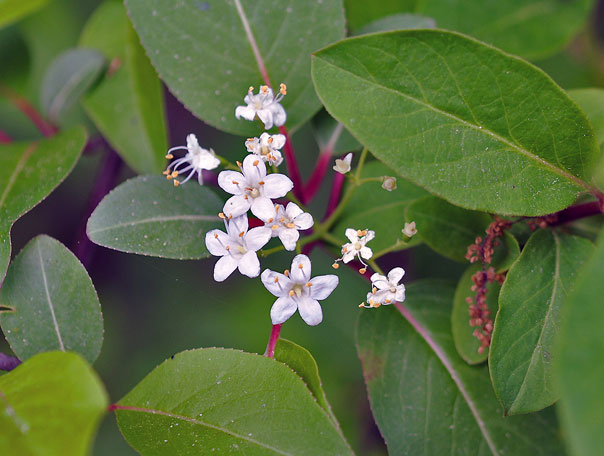Blackhaw Virburnum
Virburnum prunifolium
Viburnum prunifolium, more commonly known as Blackhaw Viburnum, is a deciduous shrub native to the midwestern, southern, and eastern regions of the United States. The Blackhaw is part of the honey suckle family, but gets its common name due to its similarity to the Hawthorne shrub (also known as the Redhaw).
The Blackhaw produces flat top clusters of showy white flowers in April to May, which attract pollinating species of wildlife, such as butterflies and bees. The dense, glossy, dark green leaves, which turn burgundy in the fall, provide cover and a nesting site for birds. The bluish-black berry like fruit clusters (drupes), which the Blackhaw produces in the fall, serve as a great food source for birds, as well.
The Blackhaw ranges in height from 12 to 15 feet with a spread of 6 to 12 feet. Its height and spread combined with its dense foliage growth makes the Blackhaw a great choice for hedges or natural screens. The Blackhaw grows in average to dry well-drained soil and prefers full sun or partial shade.
You will find the Blackhaw growing in woods, thickets, and on stream banks, but since it tolerates drought and air pollution, it does well in a variety of environments.
The Blackhaw bark and root bark can be used for medicinal purposes, mainly as a sedative, muscle relaxant or anti-spasmodic to treat issues such as false labor pains, hypertension and asthma.







